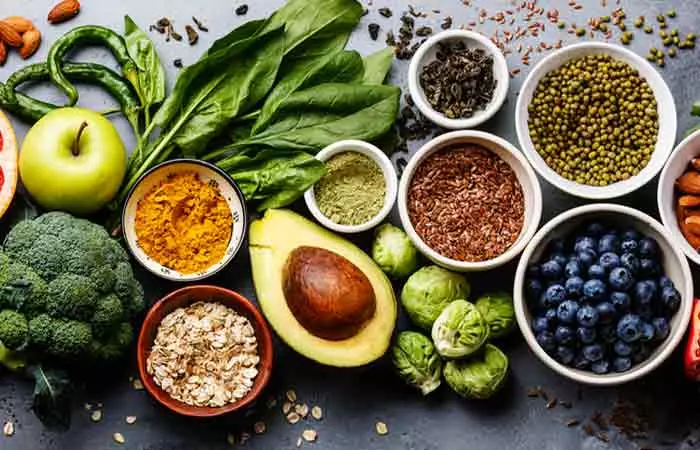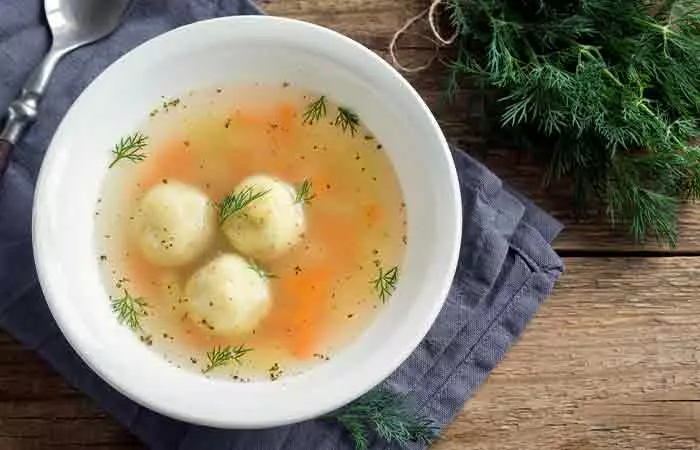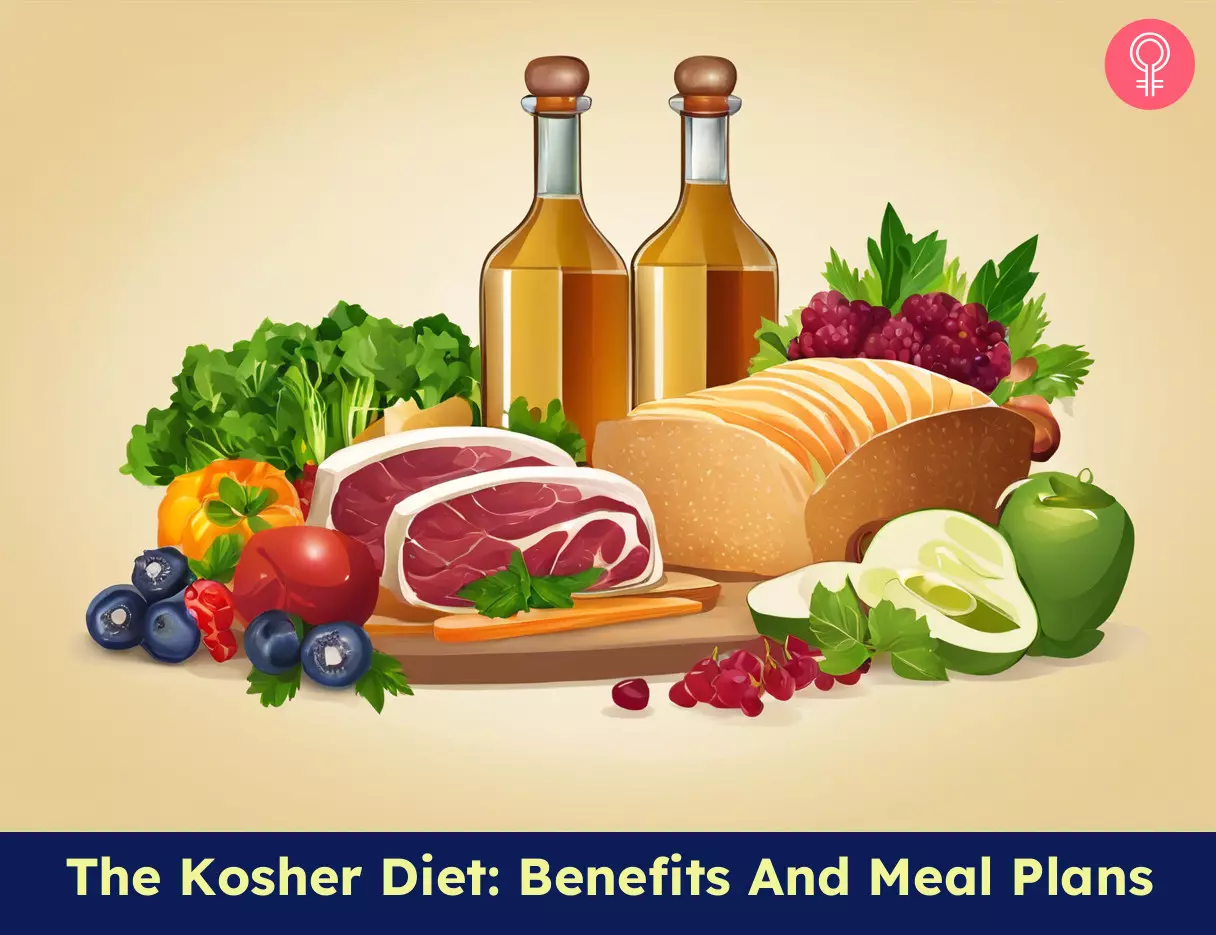What Does Kosher Mean?
The word ‘kosher’ comes from the Hebrew term ‘kashrut’, which means ‘fit’ or ‘proper’. In simple terms, it means food that meets the standards set by Jewish dietary laws (1). It indicates which foods are allowed for consumption and how they must be prepared. These rules come from religious texts like the Leviticus and Deuteronomy in the Torah. However, their practical applications and details are elucidated in the oral law. It was subsequently codified in the Mishnah (a foundational Jewish text containing oral laws) and Talmud (a comprehensive commentary and interpretation of the Mishnah that contains additional discussions and teachings) and further expanded upon in rabbinical literature. The Torah outlines which animals are considered clean (fit for consumption), such as cows and chickens, and which are unclean, such as pigs and shellfish. Rules about how food should be prepared and served include what should and should not be mixed. For example, dairy and meat are not to be mixed. It also offers guidance on humane methods of slaughter (shechita) (1). Keeping kosher is not just about food; it is a way for the Jewish people to connect with their faith, heritage, and community. In modern times, various rabbinical organizations have emerged to certify products, manufacturers, and restaurants as kosher, often using a symbol called a hechsher to signify their endorsement. While some strictly follow these rules, others may have a more relaxed approach. The findings from the Pew Research Center’s survey conducted between November 2019 and June 2020 involving 4,718 respondents in the U.S. revealed that only 17% of American Jews maintain kosher dietary practices within their households. This percentage comprises 22% of Jews who identify with a religious affiliation and a mere 3% of Jews who do not associate with any specific religion. Notably, a substantial 95% of Orthodox Jews adhere to kosher practices in their homes. The figures stand at 24% for Conservative Jews and 5% for Reform Jews in this regard. One can maintain the integrity of kosher traditions and dietary practices by keeping some key rules in mind. The following guidelines define what foods are considered clean and proper, as well as the methods and practices that ensure compliance with these sacred dietary laws.
Kosher Rules
Kashrut, the intricate world of Jewish dietary laws, is governed by a set of fundamental principles and guidelines that shape what can and cannot be consumed within this tradition.
1. Prohibited Animals
Certain animals are entirely off-limits, including their flesh, organs, eggs, and milk. However, this restriction specifically relates to consumption. The prohibited animals can otherwise be used in sports equipment or clothing, such as pigskin (2).
2. Humane Slaughter
The method of slaughter must adhere to Jewish law when it comes to animals that are permitted for consumption. This humane process, known as shechita, is a cornerstone of kashrut standards (3).
3. Blood Removal
Before meat and poultry can be considered kosher, all blood must be thoroughly drained or broiled out, leaving no trace behind (3).
4. Prohibited Parts
Even within permissible animals, certain parts (chelev and gid hanasheh) are restricted from consumption. Chelev refers to specific types of fat typically located around the internal organs of the animal, such as the kidneys and stomach. In the Torah (Leviticus 7:22-27), it is explicitly forbidden to eat chelev as it is considered sacred and set aside for God. Gid hanasheh pertains to the sciatic nerve of the animal. The prohibition against consuming gid hanasheh originates from the biblical story in Genesis 32:25-33. Jacob, one of the patriarchs, wrestled with an angel who, during the struggle, touched the hollow of Jacob’s thigh and damaged the sciatic nerve. As a result, the Torah prohibits the consumption of this nerve to commemorate this event.
5. Bug Inspection
While fruits and vegetables are generally allowed, they must undergo rigorous inspection to remove any insects, which are not fit for consumption.
6. Meat And Dairy Separation
Kashrut imposes strict separation between meat and dairy products. Fish, eggs, fruits, vegetables, and grains can be enjoyed with either meat or dairy, but not both. However, some interpretations may restrict the consumption of fish with meat as well (2).
7. Utensil Separation
Utensils, including cookware and cooking surfaces, that have been in contact with meat must not be used with dairy (and vice versa). This separation extends to utensils that have been in contact with non-kosher food too, but only if the contact occurs when the food is hot.
8. Non-Jewish Grape Products
Grape products made by non-Jewish individuals are not considered kosher and are strictly prohibited. While these principles represent the core of kashrut rules, additional rules and variations may apply based on specific circumstances and interpretations within the diverse and vast Jewish community. Observing these kosher rules emphasizes cleanliness, proper food handling, and inspection. Thus, this practice offers many advantages beyond the preservation of cultural identity. Keep reading to discover the benefits of following the kosher diet.
Benefits Of The Kosher Diet
The kosher diet, rooted in centuries of tradition, offers several unique advantages:
1. Promotes Food Safety And Hygiene
The kosher diet often leads to better food quality standards. This is because it necessitates careful inspection and preparation of food. This results in the availability of fresher, healthier options to those who follow it. Also, the particular rules of kashrut play a significant role in promoting food safety. For instance, they ensure that meat undergoes proper preparation and a thorough removal of blood. This meticulousness significantly reduces the risk of foodborne illnesses (4). Thus, individuals can have greater confidence in the safety and quality of their meals by adhering to these rules.
2. Propagates Humane Slaughter Practices
One of the key aspects of kashrut is the requirement for humane animal slaughter. This means that animals must be treated with respect and taken through a swift and painless slaughter process. This ethical treatment aligns with many people’s values and demonstrates a commitment to compassion for animals (3).
3. Encourages Mindful Eating
Keeping kosher necessitates careful consideration of every food item. Individuals must pay close attention to the ingredients, preparation methods, and the different food combinations. This level of mindfulness in eating promotes a greater awareness of dietary choices and their impact on one’s health (5). This mindfulness extends beyond the physical aspects of food for many who follow the kosher diet. It becomes a spiritual practice and enhances their connection with their faith and heritage. It guides them in selecting specific foods to eat, such as kosher-certified meats and fish with fins and scales. This reinforces their commitment to their tradition. In the following section, we shed further light on the foods you can have on the kosher diet.
Foods To Eat On The Kosher Diet
The following foods are allowed on the kosher diet:
1. Meat (Fleishig)
Kosher meat comes from animals that meet specific criteria outlined in the Jewish dietary laws. Some common options include beef, lamb, and poultry, provided they have undergone kosher slaughter and processing (3).
2. Dairy (Milchig)
Dairy products like milk, cheese, and yogurt are allowed, provided they are produced using kosher-certified ingredients and equipment. They should not be consumed together with meat in the same meal (2).
3. Pareve (Parve)
Pareve foods are neither dairy nor meat. These include fish, eggs, fruits, vegetables, grains, and many other non-animal products. Fish is not classified as meat due to historical interpretations of biblical texts. Fish do not produce milk and have different characteristics from land animals. Thus, they can be consumed with both dairy and meat.
4. Plant-Based Foods
Plant-based foods like fruits, vegetables, legumes, nuts, and grains are staples of the kosher diet. These are naturally kosher and form the foundation of many kosher meals.
5. Kosher Fish
Certain species of fish with fins and scales are considered kosher. These include salmon, tuna, and cod.
6. Kosher-Certified Snacks
Many packaged snacks, candies, and baked goods are available with kosher certification.
7. Kosher Wine And Grape Juice
Wine and grape juice produced according to kosher standards can be enjoyed. The kosher diet also involves an array of foods to avoid. Scroll below to discover these dietary restrictions.
Foods To Avoid On The Kosher Diet
The following foods are to be avoided on the kosher diet:
1. Treif (Trefe)
Treif refers to any food that does not meet the criteria outlined in Jewish dietary laws. Common examples include pork and other non-kosher animals or their byproducts (2).
2. Non-Kosher Fish
Certain species of fish, such as shellfish, lack fins and scales and are not kosher (2).
3. Non-Kosher Certified Foods
Food products like wine or gelatin without a reliable kosher certification symbol (hechsher) should be avoided (2). Individuals show deep respect for their religious traditions by following the kosher diet’s strict guidelines on foods to avoid. Nevertheless, these rules inspire creativity in the kitchen and lead to a variety of tasty kosher dishes. Discover some of them in our sample meal plan below.
Sample Kosher Diet Meal Plan
Day 1 Day 2 Day 3 Day 4 Day 5 Day 6 Day 7 Each day offers a new culinary adventure, and you will find that the world of kosher cooking is as diverse as it is delicious. Keep reading to learn about some traditional kosher recipes to expand your culinary repertoire.
Kosher Food Recipes
1. Matzah Ball Soup
Recommended Serving Size: 1-2 matzah balls with a cup of soup Ingredients
4 cups of chicken broth 1 cup of water 2 eggs 2 tbsp of vegetable oil 1 cup of matzah meal 1/2 tsp of salt 1/4 tsp of black pepper 1/4 tsp of garlic powder
How To Prepare
2. Challah
Recommended Serving Size: A single slice or two (side dish) or a mini loaf (main dish) Ingredients
4 1/2 cups of all-purpose flour 1/4 cup of granulated sugar 1 1/2 tsp of salt 2 1/4 tsp of active dry yeast 1 1/4 cups of warm water 1/4 cup of vegetable oil 3 large eggs 1 tbsp of poppy or sesame seeds (optional)
How To Prepare Kosher recipes open up a world of flavorful possibilities for those following this dietary tradition. However, they can pose certain challenges as well. Learn more in the next section.
Disadvantages Of The Kosher Diet
The strict dietary rules of kashrut can be limiting. The prohibition of certain foods and combinations may cause a perceived lack of culinary variety. These restrictions become even more stringent during Passover, limiting the types of foods that can be consumed. Kosher-certified products and meats can be more expensive than their non-kosher counterparts due to the additional processes and inspections involved. Observing kosher laws often requires meticulous food preparation, like the separation of meat and dairy or proper koshering of the utensils. This can be time-consuming. Finding kosher products or restaurants can be challenging in some regions. This can cause inconvenience for those following a kosher diet. Dining at non-kosher restaurants can be challenging, as adhering to dietary laws may restrict various choices when eating out (2). Understanding and correctly applying all the rules of kashrut can be complex, especially for those new to the dietary system. People who are not familiar with kosher dietary laws may have misconceptions or misunderstandings about the diet. Observing the kosher diet can sometimes lead to social or cultural challenges when interacting with individuals not familiar with its principles. What happens if you break the kosher diet? Breaking the kosher diet means consuming non-kosher foods, which goes against Jewish dietary laws. The consequences can vary; spiritually, it may cause guilt, while health-wise, it depends on one’s choices. Some people may experience digestive discomfort or allergic reactions following the intake of non-kosher foods after a long-term consumption of kosher food. Is a kosher diet healthier than other diets? Not really. Whether a kosher diet is healthier depends on individual food choices. Kosher guidelines prioritize cleanliness and specific preparation methods. While it does not guarantee healthiness, it can promote mindful eating and better food quality in some cases. Why does kosher taste better? Kosher food’s perceived taste can relate to careful preparation and quality standards. The absence of certain ingredients, like mixing dairy and meat, may enhance flavor profiles for some. However, taste is subjective and can vary among individuals.
Illustration: The Kosher Diet: Benefits And Meal Plans
Watch the following video for a mouthwatering journey as you unveil the secrets to crafting the perfect oven-roasted kosher brisket, a delightful culinary masterpiece that celebrates Jewish tradition and flavor.















